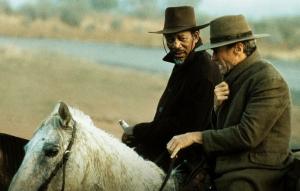Meaning of the Sonatina Poem by Rubén Darío
What does the Sonatina poem by Rubén Darío mean:
"Sonatina" is a poem written by Rubén Darío, the greatest exponent of Latin American modernist poetry. Talk about the longings for love and freedom of a princess locked in her palace.
As such, "Sonatina" is a poem of great beauty, which stands out for its formal rigor, precision and preciousness. language, and for its pleasant musicality, features, all of them, that are ascribed to the literary current of the modernism.
Found in the book Profane prose and other poems (1896), one of the most famous collections of poems by Rubén Darío.
Poem "Sonatina"

Analysis of the poem
"Sonatina" is a poem that speaks of the wishes of a princess locked in a palace, imprisoned in her golden cage, that she dreams of other worlds, other latitudes, that she wishes that a prince come to rescue her from that reality that denies.
In this sense, it is a poem that addresses one of the favorite themes of modernist writers: that of the escape, escape from the world, which is painted as banal, sad and oppressive of dreams, the longing for Liberty.
Hence, it is a poem that summons to reverie, where the imagination works as a tool to achieve that escape from a reality that oppresses the soul.
In this evasion of evasion, the poem also evokes exotic environments and elements, typical of stories of medieval fairies or distant places, but never confined to a historical time precise.
Rubén Darío explained that he had written the poem with the intention of portraying the waiting for love for part of a young woman, and that, in this sense, the poem was an allegory of the youths.
The title, “Sonatina”, for its part, alludes to a musical form similar to the sonata, but shorter and easier to use. execute, since musicality is a very important aspect in Rubén Darío's poetry and aesthetics modernist.
Verse type, rhyme and meter
The poem is composed of fourteen syllable verses, also known as Alexandrines. It has eight stanzas, of six verses each, also called sextinas. Uses consonant rhyme in an AABCCB pattern.
Literary figures
Epithets
It is an adjective that is placed before the noun, highlighting a certain characteristic of it and giving it greater expressiveness. For example:
- "Vague illusion."
- "Expensive diamonds"
- "Poor princess."
- "Happy gentleman."
Anaphora
It consists of the repetition of an element at the beginning of several lines in a row, in order to give a certain characteristic rhythm to the poem. For example: “He no longer wants the palace, neither the silver spinning wheel, / ni the enchanted hawk, neither the scarlet jester, / neither the unanimous swans on the azure lake ”.
Alliteration
It is an expressive resource that consists of the repetition of the same sounds, especially consonants, in the same phrase. For example: “the princeases pergo on for the eastern sky ”.
Metaphor
It is the subtle relationship that is established between two ideas, concepts or images. For example:
- "Strawberry mouth, rose mouth."
- "Light her lips with her kiss of love."
- "She is imprisoned in her golds, she is imprisoned in her tulle, / in the marble cage of the royal palace."
Synesthesia
It consists of mixing different types of sensations or perceptions (visual, auditory, tactile, olfactory or taste) in a single image. For example:
- "The sweetness of the light."
- "The thunder of the sea."
Prosopopoeia
Attribution of qualities of human beings to irrational beings or objects. For example:
- "A flower faints."
- "The keyboard of its sound key is mute."
Rhetorical question
The poetic voice wonders, although its question will not necessarily be answered. For example:
- "What will the princess have?"
- “Do you think of the prince of Golconda or China, / or the one who has stopped his Argentine chariot / to see the sweetness of light from his eyes?
Hyperbaton
Rhetorical figure in which the usual order of the elements of the sentence is altered. For example:
- "To see the sweetness of light from his eyes."
- “On horseback, with wings, towards here he goes, / in the belt the sword and in the hand the goshawk, / the happy knight who adores you without seeing you, / and who comes from afar, conqueror of Death, / to light your lips with a kiss from love".
About the Author
Félix Rubén García Sarmiento, better known by his literary pseudonym Rubén Darío, was born in Nicaragua in 1867. He was a poet, journalist, and diplomat, considered the greatest exponent of Spanish-American literary modernism, and one of the most important poets in Spanish literature in the last century. In his work, the poetry collections Azul (1888), Prosas profanas y otros poemas (1896) and Cantos de vida y esperanza (1905) stand out. He died in Nicaragua in 1916.

Literature professional, graduated from the Universidad de Los Andes. Passionate about literature, history and philosophy. He has worked creating, writing and proofreading in publishing, advertising, journalism and digital content since 2008.


